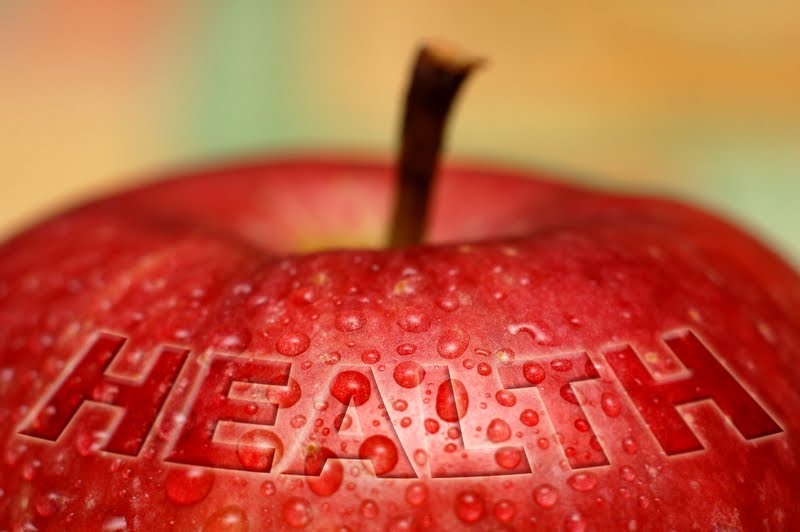Health
Our work to build healthy communities, families and individuals is at the heart of Mercy Corps' vision for social change. By partnering with a range of partners, from village health committees to government agencies, we help build the means to improve maternal, newborn and child health, ensure proper nutrition and combat infectious diseases.
Country: Zimbabwe
Topics: HIV/AIDS, Health, Citizen Involvement
Journal: Telling Africa's Stories
 A community home-based volunteer counsels a client during her home visits in Mbare, Harare, Zimbabwe. A Mercy Corps-led consortium is is providing HIV services to poor and vulnerable households in urban areas. Photo: courtesy of Zimbabwe Project Trust
A community home-based volunteer counsels a client during her home visits in Mbare, Harare, Zimbabwe. A Mercy Corps-led consortium is is providing HIV services to poor and vulnerable households in urban areas. Photo: courtesy of Zimbabwe Project Trust Florence Tigere is in bed today. The typically vibrant 55-year-old woman, who serves as both treasurer and secretary of her HIV Sahwira Support Group, is suffering from a piercing headache. The severe pain, coupled with Florence’s swollen face and feet, has community home-based volunteer Mary Musamba concerned.
“Please take your mother to the hospital immediately,” Mary advises Florence’s 17-year-old daughter, giving her 50 cents of her personal money to pay for transport. Mary is worried Florence may have contracted a type of meningitis or possibly malaria. In either case, she needs treatment right away, especially because Florence’s immune system is already compromised by the HIV.
The importance of early medical referrals is one of the many reasons the Joint Initiative for Urban Zimbabwe (JI) — a consortium of ten non-governmental organizations (NGOs) places a strong focus on community home-based care. The consortium, which is led by Mercy Corps, is providing HIV services to poor and vulnerable households in urban areas — including delivery of free home-based care to more than 8,578 clients in six urban areas of Zimbabwe.
Continue Reading ›
- Richard Nyamanhindi's blog
Mothers supporting mothers
Country: Indonesia
Topics: Women's Empowerment, Urban, Health, Food/Nutrition, Children
 A baby at her mother's feet during a Mercy Corps-sponsored Mother's Support Group in the neighborhood of Cengkareng Barat, Jakarta, Indonesia. Photo: Julie Rogers/Mercy Corps
A baby at her mother's feet during a Mercy Corps-sponsored Mother's Support Group in the neighborhood of Cengkareng Barat, Jakarta, Indonesia. Photo: Julie Rogers/Mercy Corps When my first daughter was born, none of my closest friends had children and I was living far from my mother and grandmothers. I felt alone with my questions and concerns about sleep, diapers and breast feeding so I joined a local mother’s group. With our babies fanned out in a circle in front of us, we sat on the floor and spoke to one another about our fears and joys and most importantly, we shared experiences and information about how to feed and nurture our babies.
I was recently reminded of how empowering and comforting being part of such a group can be when I visited a Mother’s Support Group meeting in West Jakarta. The group was led by local government and community representatives with Mercy Corps staff from the current Child Survival program there to provide technical assistance on matters of nutrition and health.
 Some of the babies and mothers who attended the first Mother's Support Group in Jakarta's Cengkareng Barat neighborhood. Photo: Julie Rogers/Mercy Corps
Some of the babies and mothers who attended the first Mother's Support Group in Jakarta's Cengkareng Barat neighborhood. Photo: Julie Rogers/Mercy Corps This Mother’s Support Group was the first to be held in Cengkareng Barat
kelhuran (or sub-district) and was modeled on groups established by Mercy Corps’ previous Child Survival: Healthy Start program, which operated in North Jakarta. The four-year program focused on increasing community knowledge and acceptance around exclusive breastfeeding as the best way to nourish an infant, as well as establishing a replicable support model for urban communities.
Continue Reading ›
Tags: Mothers Helping Mothers
Blog Post: Posted July 2, 2011, 12:45 pm by Travis Penn
Another busy day in the world's tenth-biggest city
Country: Indonesia
Topics: Women's Empowerment, Urban, Health, Environment
I wasn't quite expecting to see as much of Jakarta as this. Today we met the Mercy Corps staff at their offices for a presentation of the various projects the organization is doing in Indonesia. Then we got into the van to go to North Jakarta to visit a hospital whose community program encourages and supports breastfeeding in its pre- and post-natal health care.
 Through programs in hospitals, health clinics and neighborhood support groups, Mercy Corps encourages and empowers women to breastfeed, helping nurture a healthy bond between mother and child. Photo: Travis Penn for Mercy Corps
Through programs in hospitals, health clinics and neighborhood support groups, Mercy Corps encourages and empowers women to breastfeed, helping nurture a healthy bond between mother and child. Photo: Travis Penn for Mercy Corps We got on the highway and then things began to crawl. It look us three hours to get to our destination and, upon arrival, we all just poured out of the van in search of a bathroom. Imagine driving for three hours — all within the same city! (Note: at more than 9.5 million people, Jakarta is the tenth biggest city in the world.)
As soon as we got to the hospital, we talked with the people in charge of the breastfeeding program — an approach that Mercy Corps is championing here, especially in poor neighborhoods — and then went up to the maternity ward to see the new mothers and their babies. It was interesting to visit a hospital in a country such as Indonesia. The nurses in training looked so young and wore white veils. The overall quality of care seemed to be higher than I might have expected. There were six beds to each room, but there was plenty of space. The only problem I saw was that there was only one working elevator in the building.
Continue Reading ›
Blog Post: Posted July 1, 2011, 12:20 pm by Martha Munocito
"Broadcasting" important health and nutrition news in rural Guatemala
Country: Guatemala
Topics: Rural, Health, Food/Nutrition
Each time I showed up to small and faraway communities where the heat was unbearable, where there was no electricity to turn on a light bulb, where there was no wind to ease the heat in the air — and where the field workers were parking their motorcycles and placing their gear on the dried grass after a heavy day of working in the field — I met energetic personalities ready to connect and do some hands-on work with Mercy Corps Guatemala's PROCOMIDA food and nutrition project.
 A PROCOMIDA staffer for Mercy Corps Guatemala takes place in a mock television broadcast to practice how to better relay important health and nutrition information to families in some of Guatemala's poorest villages. Photo: Martha Munocito/Mercy Corps
A PROCOMIDA staffer for Mercy Corps Guatemala takes place in a mock television broadcast to practice how to better relay important health and nutrition information to families in some of Guatemala's poorest villages. Photo: Martha Munocito/Mercy Corps Part of my job with these hard-working field staffers is gathering in PROCOMIDA's warehouses or small meeting halls in the communities where we work to practice and create key nutritional and health messages. The use of different communication channels is one of the strategies PROCOMIDA uses to achieve behavior change for better health and nutrition with the beneficiaries of the project, who live in some of Guatemala's poorest and most remote villages.
The warehouse space was converted into a makeshift studio to do a simulated television interview or news report. Printing paper was used to build up the studio's walls and motorcycle helmets were transformed into video cameras. Empty cardboard boxes became computers monitors. Cell phones were used to invite the audience to participate by calling in to express their opinions and questions about the interviewees' comments or the news reported about various health issues and topics.
Continue Reading ›
Blog Post: Posted June 27, 2011, 12:56 pm by Iswanto JA
Inviting the rain
Country: Indonesia
Topics: Water/Sanitation, Rural, Health, Displacement
Journal: Dispatches from the Mentawai Islnds
In their old villages — before the earthquake and tsunami hit Indonesia's Mentawai Islands last year — people never had trouble getting fresh water. Their homes were always located close to rivers, because they knew that water is of the utmost importance.
 Bright orange water tanks, provided by Mercy Corps through a grant from the Bill & Melinda Gates Foundation, located behind the temporary shelters of a displacement camp in Indonesia's Mentawai Islands. Photo: Iswanto JA/Mercy Corps
Bright orange water tanks, provided by Mercy Corps through a grant from the Bill & Melinda Gates Foundation, located behind the temporary shelters of a displacement camp in Indonesia's Mentawai Islands. Photo: Iswanto JA/Mercy Corps Without shade trees, the displacement camps for tsunami survivors in Rua Monga and Bulak Monga are hot and barren. People prefer to get out of their temporary shelter and spend as much time in their farm fields as possible.
Life post-tsunami has been overwhelming for everyone affected. People in Rua Monga and Bulak Monga moved to temporary shelters built by Indonesia's National Disaster — without a reliable water source or lighting, plus the loss of their normal way of life, living conditions have been very difficult.
Continue Reading ›
Blog Post: Posted June 26, 2011, 9:02 am by Martha Munocito
Molding more than corn — molding nutrition
Country: Guatema
 A “muñeco” — a basket full of Guatemalan tortillas covered with a traditional kitchen towel. Photo: Martha Munocito/Mercy Corps
A “muñeco” — a basket full of Guatemalan tortillas covered with a traditional kitchen towel. Photo: Martha Munocito/Mercy Corps One of Guatemala's main staple foods is corn — in fact, Guatemalans sometimes even refer to themselves as “corn people.” One of the traditional ways to consume corn here is in the form of tortillas.
One specific, and unforgettable, aspect of the process of making tortillas is that
"pla pla pla" or
"clap clap clap" sound made by female hands, young or old, massaging the corn’s dough and molding tortillas every day. The maneuver is masterfully done by elegant and rhythmic female fingers shaping the corn’s dough. Those fingers move naturally in a circle to mold tortillas all day long. This tradition is passed in the kitchen at an early age, from generation to generation, and from stove to stove.
Mothers participating in Mercy Corps' PROCOMIDA program here in Guatemala use the pinto beans and vegetable oil being provided by the project to combine with corn from their crop fields. They use these two ingredients to prepare the traditional Guatemalan
tayuyos or
shutes, which traditional foods made from tortillas mixed with beans. These two types of filled tortillas are favorite foods for young children. Mothers mold the corn and PROCOMIDA supports them to preserve cooking traditions with highly nutritious ingredients.
Continue Reading ›
Posted June 9, 2011 by Roger Burks
All The Colors of Helping Survivors
Country: Japan
 Fumie Sugawara (in glasses) plays a colorful game with young tsunami survivors at Kesennuma Middle School. Photo: Christopher Cabatbat/Mercy Corps
Fumie Sugawara (in glasses) plays a colorful game with young tsunami survivors at Kesennuma Middle School. Photo: Christopher Cabatbat/Mercy Corps Fumie Sugawara sits on the blue tarpaulin that's spread across the floor the gymnasium. A bright yellow truck and other vibrant toys are gathered around her. Fumie engages two young girls in an imaginative game using a dozen different shades of Play-Doh.
She has always found herself drawn to art and expression through colors. Colors helped Fumie make it through a personal crisis years ago, when she was a young university student in the United States. They helped her choose pursuit of an Art Therapy degree. And today, they're helping her bring creative therapeutic play to young tsunami survivors as part of Mercy Corps' Comfort for Kids program here in northeastern Japan.
Watch Comfort for Kids activities taking place in Kesennuma
Fumie grew up in the city of Kesennuma, which was hit hard by March's disastrous earthquake and tsunami. She attended Kesennuma Middle School, which is now being used as an evacuation center and temporary shelter for families that lost their homes. That's where today's Comfort for Kids activity is taking place: in the very same gymnasium where she played games as a young girl.
Things have come full circle for Fumie — all the way from here in Japan to Wisconsin and back. She earned her Master of Science degree in Art Therapy at Mount Mary College in Milwaukee, a perfect melange of her interests in colors, education and psychology. Then she worked as a therapist in the United States for seven years, before going home to Kesennuma in February.
From "hopeless" to helpful
When the earthquake and tsunami struck less than a month later, Fumie was far from her hometown of Kesennuma. She was traveling with her mother when they heard the horrific news, and because public transit was down, couldn't get back to Kesennuma until two days later. Thankfully, her family was all right. But her city was in bad shape. Hundreds of people had lost their homes, and the needs were overwhelming.
 The sprawl of blue tarpaulins and stark white tents inside the gymnasium of Kesennuma Middle School, a place that several dozen families have called home for nearly three months now. Photo: Christopher Cabatbat/Mercy Corps
The sprawl of blue tarpaulins and stark white tents inside the gymnasium of Kesennuma Middle School, a place that several dozen families have called home for nearly three months now. Photo: Christopher Cabatbat/Mercy Corps "To be honest, when the disaster hit, at first I felt helpless and hopeless," Fumie explains. "I was already out of work, with nothing to do, so I went to the local volunteer center. What they wanted were hands to sort things out — anything. So I said, 'Here, let me do it.'"
"But what I really wanted to do was art therapy for displaced children and families. I kept coming in and expressing my background, which was initially hard for people to understand — we don't really have that in Japan," she continues. "But then they asked me to go and see about the needs at the evacuation centers, and see if there was anything I could do about it. That’s how this started, and that's how I started working with Peace Winds (Mercy Corps' partner).”
Since then, she's been busy helping develop the Comfort for Kids program, continuing to visit evacuation centers like this and connecting with young survivors through art, sports and other fun activities. Almost three months after the tsunami ended or shattered thousands of lives, Fumie sees so many needs — for children and adults alike.
“Mostly, kids here are keeping their experience and grief to themselves,” she explains. "Art is such a safe communication — it creates distance from things that are painful or uncomfortable. And play is a powerful medium for children to explore what they've experience and what they're feeling. Comfort for Kids provides the space, time and materials — and play partners — to help them do that.”
The girl with red eyes
Fumie then remembers one young girl that she recently met at one of the evacuation centers.
 Photo: Christopher Cabatbat/Mercy Corps
Photo: Christopher Cabatbat/Mercy Corps "We were doing an art exercise with several children. 'Draw anything you want,' I said. The kids said, ‘I can draw this’ and showed me pictures of pretty things like dresses," she recalls. "Then something happened when they got off by themselves. When they came back, one girl showed me a picture she’d drawn of a girl in a dress with red eyes — really red. Then she quietly folded it, embarrassed. She didn’t want to show anyone. So we put it in an envelope for safe keeping until she’s ready to show it.
"This girl has stayed in a community center just after the tsunami, trapped with no food or water until they were rescued two days later by helicopter. She saw fire. She saw explosions.”
Fumie pauses, and then keeps describing her interaction with the young girl that day.
“I asked her, ‘What do you want at this moment?’ She said, ‘A house’,” Fumie says. “We have to listen to what they say. When they try to express themselves, we give them the chance without us changing their story at all. We create a safe environment. We repeat what they say so they can process what they need to say.
“So I told her, ‘We cannot bring back your house, but here’s what we can provide.’ It’s okay to tell them what we can control and what we cannot control.”
Therapy for survivors of all ages
It's not just children who feel like their world is out of control — their parents are feeling enormous stress as well.
“Adults get to the point where they can’t control the chaos anymore," Fumie explains. "Children are able to sort it out, like blocks, through play. We want to give kids that time and space so adults can have their time and space as well.”
 Cheerful, creative, indomitable spirits like Fumie's are helping disaster-affected children rediscover play and happiness despite hard times. Photo: Christopher Cabatbat/Mercy Corps
Cheerful, creative, indomitable spirits like Fumie's are helping disaster-affected children rediscover play and happiness despite hard times. Photo: Christopher Cabatbat/Mercy Corps Psychosocial needs here in northeastern Japan have no age limit. That's why Fumie is working hard alongside her Peace Winds and Mercy Corps colleagues to develop programs that help any survivors who seek therapy and the chance to explore their feelings.
“We have to provide more specific programs for all age groups, both children and adults. Even the elderly, to facilitate healthy communication between generations,” she says.
The world of northeastern Japan's evacuation centers is dominated by big blue tarpaulins, stark white tents and the uncertainty of what comes next for thousands of survivors. But with help from Mercy Corps and Peace Winds, Fumie Sugawara is bringing brightness, lightness and caring support back into hundreds of lives.
Tags: Japan 90 Day Update
Video: Posted June 9, 2011 by Roger Burks
VIDEO: Comfort for Kids Activities in Kesennuma, Japan
Country: Japan
Blog Post: Posted June 8, 2011, 7:25 am by Manasi Sharma
Back in Tajik Land
Country: Tajikistan
Topics: Women's Empowerment, Rural, Health, Education, Citizen Involvement, Children
 Expectant mothers and mothers-in-law at a focus group discussion in Gonchi district, Tajikistan Photo: Mercy Corps Tajikistan
Expectant mothers and mothers-in-law at a focus group discussion in Gonchi district, Tajikistan Photo: Mercy Corps Tajikistan I’m back in Tajikistan, six months after my first visit. This time, I’m here to support our field team with the midterm evaluation being conducted for our Maternal and Child Health program. Accompanying me is Donna Sillan, a consultant we have contracted to write the evaluation.
We spent our first two days in Khujand — in the country's northern Sughd region where most of Mercy Corps' Maternal and Child Health interventions are taking place — planning sessions with the Village District Coordinators on how to collect qualitative data to gain an understanding of the program’s impact on improving the health of women and children in the target areas, as well as other local capacity-building initiatives. The Village District Coordinators are a mix of Tajik men and women, many of them trained doctors from the Soviet era. These people are not only knowledgeable of health issues, but genuinely care about the work they are doing in the communities.
As I saw them conduct trainings, focus group discussions and various interviews with our beneficiaries, their support came across in such a kind and nurturing manner that made me think —even if I had never met them — I would feel immediately comfortable in speaking to them about my health!
Continue Reading ›
Blog Post: Posted June 1, 2011, 11:47 am by Martha Munocito
Guess who's cooking tonight in Guatemala?
Country: Guatemala
Topics: Rural, Health, Food/Nutrition, Citizen Involvement
 Recipe demonstrations are the vehicle to teach rural families here in Guatemala how to improve nutritional status of their children. Photo: Martha Munocito/Mercy Corps
Recipe demonstrations are the vehicle to teach rural families here in Guatemala how to improve nutritional status of their children. Photo: Martha Munocito/Mercy Corps Welcome” to PROCOMIDA's final male recipe competition! This activity was done among three teams of field workers of Mercy Corps' PROCOMIDA program to strengthen one of the educational activities organized with the beneficiaries: recipe demonstrations.
Recipe demonstrations are the vehicle to teach rural families here in Guatemala how to improve nutritional status of their children by using PROCOMIDA-provided food (pinto beans, vegetable oil, rice, and corn-soy flour) and mixing it with local cuisine. The recipe competition was the opportunity for three of the program's male chefs to cook an original recipe and to teach the jury and public about the nutritional benefits, cost and creative taste of their dishes.
Continue Reading ›



































 1 The hotter you are the darker the mehndi colour comes out on the skin. The old wives tale goes? The darker the colour the more your husband loves you!?
1 The hotter you are the darker the mehndi colour comes out on the skin. The old wives tale goes? The darker the colour the more your husband loves you!?